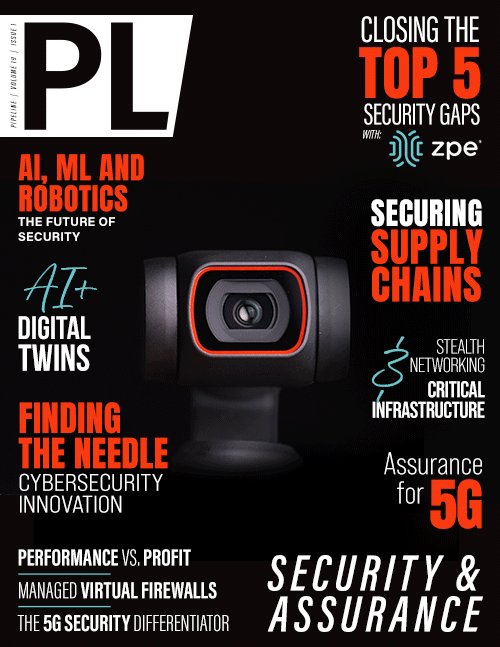Automating the Future of Data Center Security
By: Wes Swenson
 From distributed denial of service (DDoS) attacks on some of the world’s biggest names in business, including Amazon and Google, to ransomware, phishing, and domain name system (DNS) breaches that
count CNN and PayPal as victims, and cyberattacks of all sizes—the methods and sophistication of these threats continue to prove the importance of an ironclad data center security plan. Physical
threats, too, like overheating servers and unauthorized visitors, are top-of-mind considerations for data center security professionals.
From distributed denial of service (DDoS) attacks on some of the world’s biggest names in business, including Amazon and Google, to ransomware, phishing, and domain name system (DNS) breaches that
count CNN and PayPal as victims, and cyberattacks of all sizes—the methods and sophistication of these threats continue to prove the importance of an ironclad data center security plan. Physical
threats, too, like overheating servers and unauthorized visitors, are top-of-mind considerations for data center security professionals.
Like the attacks they’re designed to protect against, data center security methods need to constantly evolve to keep pace with cunning criminals who only get smarter and more calculated in their attempts to derail data centers’ operations. Inevitably, threats to data centers will continue to rise, posing a threat to physical and digital security for data centers, which can’t afford the cost breaches—in reputation and budget. Data breach costs reached a new all-time high in 2022, netting out to an average of $4.35 million USD (a 12.7 percent increase from 2020, when the average data breach cost came in at $3.86 million USD).
To combat risks, the adoption of robotics and artificial intelligence (AI) to improve efficiency, operations, and security in data centers is at an all-time high. The 2021 AFCOM State of the Data Center Report finds that 40 percent of surveyed respondents expect robotics and automation to soon become a regular piece of the data center landscape. Additionally, 16 percent of those surveyed are already leveraging robotics and autonomous systems in their centers, while another 35 percent indicated they plan to deploy similar solutions in the next three years. Data centers aren’t alone: 76 percent of enterprises prioritized AI and machine learning (ML) over other IT initiatives in 2021, with 86 percent of these organizations reporting increased AI/ML spending between 2019 and 2020.
The two primary burdens to data center security are threats to facility infrastructure and cybersecurity threats to data and applications housed by the infrastructure itself. When it comes to security automation, effective strategies must consider what digital and physical barriers need to be constructed between looming threats and the infrastructure and data that needs to be protected. In both cases, some combination of robots, AI, and machine learning represent the path to eliminating human error, saving time and money, and optimizing task monitoring.
Automation in virtual data center security
Despite being massive buildings housing critical infrastructure, data centers that approach security solely by equipping every door with an access keypad and an armed guard won’t be able to effectively protect against what remains their biggest threat: virtual security. Applications that run on data center infrastructure operate on code that can be vulnerable to hacking. With the surge in hybrid work in recent years, remote access tools like virtual private networks (VPNs) can lead to compromised credentials and malware planting within systems.
In 93 percent of cases, an external attacker can breach an organization's network perimeter and gain access to local network resources. On top of this, when considering that the World Economic Forum (WEF) reports that 95 percent of cybersecurity issues are caused by human error, the case for automation becomes clear.
To help identify unusual network activity and secure any bad traffic, AI can help automate data center security by appropriately managing firewall rules and processing data. The sheer amount of data that needs to be sorted in order to spot anomalies is simply too massive and complicated for complete human sorting and interpretation. Even skilled analysts would be hard pressed to predict where data center functionality failures may occur in order to reduce downtime or accurately spot an incoming cybersecurity risk. AI-based security solutions, however, are able to analyze incoming and outgoing data to spot threats.
AI is also able to learn what normal network behavior looks like and identify cyber threats when that behavior deviates from the norm. With AI, it’s also easier for data centers to detect malware or spot system loopholes. And, of course, with AI technology, better false positive rates are possible, singling out potentially damaging traffic in the most efficient way possible so that data center operators can respond with accuracy, precision, and speed.
When countless hours of data tracking and monitoring are being taken care of by AI-enabled computers, human employees are then free to examine the anomalies in that data, plot better security strategies, and utilize expanded skills and capabilities to fill other roles that work in tandem with their more repetitive-task performing counterparts.



















